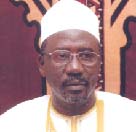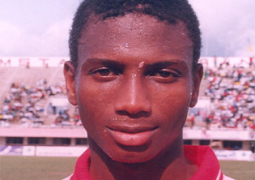
Each
prayer has its own particular time at which it must be performed. Says Allah,
“Prayer at fixed hours has been enjoined upon the believers” (an-Nisa’ 103).
The
Qur’an itself points to these different times
Allah
says, “Pray at the two ends of the day and in some watches of the night. Lo!
Good deeds annul evil deeds. This is a reminder for the mindful” (Hud 114).
Surah al-Isra’ states, “Establish prayer at the setting of the sun until the
dark of the night, and (the recital) of the Qur’an at dawn. Lo! The recital of
the Qur’an at dawn is ever witnessed” (al-Isra’ 78), and “Celebrate the praises
of your Lord before the rising of the sun and before its setting. Glorify Him
some hours of the night and at the two ends of the day that you may find
acceptance” (Taha 130).
This
verse specifically refers to the dawn prayer and the afternoon prayer, as it is
recorded in the two Sahihs. Jarir ibn ‘Abdullah al-Bajali reported, We were
sitting with the Messenger of Allah and we looked at the moon on a clear night.
The
Prophet said, ‘You will see your Lord as you see this moon, and you will not be
harmed by seeing Him. So, if you can, do not let yourselves be overpowered in
the case of prayer before the rising of the sun and its setting,’ and he
recited the above verse.”
Those
are the times of the prayers that the Qur’an mentions. From the sunnah, we have
the following: ‘Abdullah ibn ‘Amr reported that the Messenger of Allah, upon
whom be peace, said, “The time of the noon prayer is when the sun passes the
meridian and a man’s shadow is the same length as his height. It lasts until
the time of the afternoon prayer. The time of the afternoon prayer is until the
yellowing of the sun (during its setting). The time of the evening prayer is as
long as twilight.
The
time of the night prayer is to the middle of a night of medium duration. And
the time of the morning prayer is from the appearance of the dawn until the
time of sunrise. When the sun rises, abstain from praying, as it rises between
the horns of Satan.” (Related by Muslim).
Jarir
ibn ‘Abdullah narrated that the angel Gabriel came to the Messenger of Allah
and said to him, “Stand and pray,” and they prayed the noon prayer when the sun
had passed its meridian. He then came to him for the afternoon prayer and said,
“Stand and pray,” and they prayed the afternoon prayer while the length of a
shadow of something was similar to the length of the object. Then he came a t
sunset and said, “Stand and pray,” and they prayed the sunset prayer when the
sun had just disappeared. Then he came at night and said, “Stand and pray, “and
they prayed the night prayer when the twilight had disappeared.
He
came again when dawn broke (and they prayed the Morning Prayer). Then Gabriel
came on the next day at noon and said (to the Messenger of Allah), “Stand and
pray,” and they prayed the noon prayer when the length of the shadow of
something was close to the length of the object.
Then
he came for the afternoon prayer and said, “Stand and pray,” and they prayed
when the shadow of something was twice as long as the length of the object.
Then he came at the same time (as the previous day) for the sunset prayer,
without any change.
Then
he came for the night prayer after half of the night had passed (“or,” he said,
“one-third of the night”).
Then
he came when the sky was very yellow and said, “Stand and pray,” and they
prayed the Morning Prayer. Then Gabriel said, “Between these times are the
times for the prayers.”
As
to the authenticity of the report, it is recorded by Ahmad, an-Nasa’i and
at-Tirmizhi. Al-Bukhari observes, “It is the most authentic report concerning
the prayer times.”
The
Time for the Noon Prayer (Zhuhr)
The
previous two hadith make it clear that the noon prayer begins when the sun
passes its meridian and it continues until an object’s shadow is approximately
the same length as the object itself. If it is extremely hot, it is preferred
to delay the noon prayer until it is cooler.
This
is done in order to retain the humility and awe of the prayer. If this is not
the case, it should be prayed early in its time.
This
opinion is based on the following hadith: Reported Anas, “If it was extremely
cold, the Prophet, upon whom be peace, would pray early. If it was extremely
hot, he would wait for it to cool down.” (Related by al-Bukhari.) Abu Zharr
relates, “We were with the Prophet, upon whom be peace, on a journey.
When
the caller to prayer wanted to give the azhan, the Prophet said ‘Let it cool
down.’ This happened two or three times, until we saw the shadows of the hills.
Then the Prophet said, ‘The extreme heat is from the fragrance of Hell.
If
the heat becomes extreme, delay the prayer until it becomes cool.” (Related by
al-Bukhari and Muslim.) However, this delay does have a limit. According to Ibn
Hajr’s Fath al-Bari, “The scholars differ over how long one may wait to let the
temperature cool. Some say, ‘Until the shadow of an object becomes an arm’s
length,’ or ‘Until the shadow becomes one-fourth of one’s height.’ Others say
one-third or one-half, and so on. Its ruling is according to its basic
principle, and it changes with different circumstances, provided that the
prayer is not delayed until the end of its time.”
The Time for the Afternoon Prayer (‘Asr)
This
prayer begins in the afternoon when the shadow of an object is of the same
length as the object itself, and continues until the sun sets. Abu Hurairah
reported that the Prophet, upon whom be peace, said, “Whoever catches one
rak’ah of the afternoon prayer before the sun sets and then prays the remainder
of the prayer after the sun has set has not missed the afternoon prayer.”
The
best and most preferred time to pray the afternoon prayer ends when the sun
becomes yellowish on the horizon. This is implied by the preceding hadith of
Jabir and ‘Abdullah ibn ‘Umar. To delay the prayer until the sun becomes
yellowish, although it is permissiable, is greatly disliked, unless there is
some need to do so.
Anas
reported that he heard the Prophet, upon whom be peace, say, “The following is
the prayer of the hypocrite: he waits until the sun is between the horns of
Satan, then he gets up and prays four quick rak’ah, and he does not remember
Allah therein save a little bit.” (Related by “the group,” except for
al-Bukhari and Ibn Majah.) Says
an-Nawawi in his commentary on Sahih Muslim, “Our companions (the Shafiyyah)
hold that the afternoon prayer time can be divided into five categories: the
most virtuous time, the preferred time, the allowable time in which there is no
disliked aspect, the allowable time that contains some aspect of dislike, and
the time that is due to some excuse or necessity.
The
most virtuous time is at the beginning of the permissible time. The preferred
time is until the shadow of an object is twice the length of the object itself.
The permissible time without any aspect of dislike is from the time the sun
becomes yellowish.
The permissible time with some aspect of
dislike is from the time the sun becomes yellowish until the setting of the
sun.
The
time of excuse or necessity begins, in fact, at the time of the noon prayer for
one who is to combine the noon and afternoon prayers, due to travelling or
rain. If the afternoon prayer is made during any of those times, it has been fulfilled
properly.
If
all of those times pass and the sun has set, then one must make up the prayer.”
On
a cloudy day, it should be prayed earlier in its time. Buraidah al-Aslami
reported, “We were with the Messenger of Allah, upon whom be peace, during a
battle and he said, “Hasten in praying on a cloudy day, for one who misses the
afternoon prayer has destroyed all of his works.” (Related by Ahmad and Ibn
Majah.)
To
be Continued


